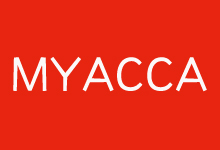ACCA人才网广大学员学习ACCA,提供ACCA相关信息和资料,帮助大家顺利地进行备考工作,今次为大家发布的是《2015年ACCA F8审计与认证业务考试大纲》希望对大家有用。
2015年ACCA F8审计与认证业务考试大纲
本文由高顿ACCA整理发布,转载请注明出处
2015年ACCA考试大纲发布,根据简章获悉,2015年ACCA F8审计 与认证业务考试大纲出现了哪些小变化?针对这些变化,高顿网校 小编为您进行详细解读分析。
ACCA 2014 All rights reserved.
Audit and Assurance (F8)
December 2014 to June
2015
This syllabus and study guide is designed to help
This syllabus and study guide is designed to help
?
with planning study and to provide detailed
?
information on what could be assessed in
?
any examination session.
?
THE STRUCTURE OF THE SYLLABUS AND
?
STUDY GUIDE
?
Relational diagram of paper with other papers
?
This diagram shows direct and indirect links
?
between this paper and other papers preceding or
?
following it. Some papers are directly underpinned
?
by other papers such as Advanced Performance
?
Management by Performance Management. These
?
links are shown as solid line arrows. Other papers
?
only have indirect relationships with each other
?
such as links existing between the accounting and
?
auditing papers. The links between these are shown
?
as dotted line arrows. This diagram indicates where
?
you are expected to have underpinning knowledge
?
and where it would be useful to review previous
?
learning before undertaking study.
?
Overall aim of the syllabus
?
This explains briefly the overall objective of the
?
paper and indicates in the broadest sense the
?
capabilities to be developed within the paper.
?
Main capabilities
?
This paper’s aim is broken down into several main
?
capabilities which divide the syllabus and study
?
guide into discrete sections.
?
Relational diagram of the main capabilities
?
This diagram illustrates the flows and links between
?
the main capabilities (sections) of the syllabus and
?
should be used as an aid to planning teaching and
?
learning in a structured way.
?
Syllabus rationale
?
This is a narrative explaining how the syllabus is
?
structured and how the main capabilities are linked.
?
The rationale also explains in further detail what the
?
examination intends to assess and why.
?
Detailed syllabus
?
This shows the breakdown of the main capabilities
?
(sections) of the syllabus into subject areas. This is
?
the blueprint for the detailed study guide.
?
Approach to examining the syllabus
?
This section briefly explains the structure of the
?
examination and how it is assessed.
?
Study Guide
?
This is the main document that students, learning
?
and content providers should use as the basis of
?
their studies, instruction and materials.
?
Examinations will be based on the detail of the
?
study guide which comprehensively identifies what
?
could be assessed in any examination session.
?
The study guide is a precise reflection and
?
breakdown of the syllabus. It is divided into sections
?
based on the main capabilities identified in the
?
syllabus. These sections are divided into subject
?
areas which relate to the sub-capabilities included
?
in the detailed syllabus. Subject areas are broken
?
down into sub-headings which describe the detailed
?
outcomes that could be assessed in examinations.
?
These outcomes are described using verbs
?
indicating what exams may require students to
?
demonstrate, and the broad intellectual level at
?
which these may need to be demonstrated
?
(*see intellectual levels below)。
?
INTELLECTUAL LEVELS
?
The syllabus is designed to progressively broaden
?
and deepen the knowledge, skills and professional
?
values demonstrated by the student on their way
?
through the qualification.
?
The specific capabilities within the detailed
?
syllabuses and study guides are assessed at one of
?
three intellectual or cognitive levels:
?
Level 1: Knowledge and comprehension
?
? ACCA 2014 All rights reserved.
?
2
?
Level 2: Application and analysis
?
Level 3: Synthesis and evaluation
?
Very broadly, these intellectual levels relate to the
?
three cognitive levels at which the Knowledge
?
module, the Skills module and the Professional level
?
are assessed.
?
Each subject area in the detailed study guide
?
included in this document is given a 1, 2, or
?
3 superscript, denoting intellectual level, marked at
?
the end of each relevant line. This gives an
?
indication of the intellectual depth at which an area
?
could be assessed within the examination. However,
?
while level 1 broadly equates with the Knowledge
?
module, level 2 equates to the Skills module and
?
level 3 to the Professional level, some lower level
?
skills can continue to be assessed as the student
?
progresses through each module and level. This
?
reflects that at each stage of study there will be a
?
requirement to broaden, as well as deepen
?
capabilities. It is also possible that occasionally
?
some higher level capabilities may be assessed at
?
lower levels.
?
LEARNING HOURS AND EDUCATION
?
RECOGNITION
?
The ACCA qualification does not prescribe or
?
recommend any particular number of learning hours
?
for examinations because study and learning
?
patterns and styles vary greatly between people and
?
organisations. This also recognises the wide
?
diversity of personal, professional and educational
?
circumstances in which ACCA students find
?
themselves.
?
As a member of the International Federation of
?
Accountants, ACCA seeks to enhance the education
?
recognition of its qualification on both national and
?
international education frameworks, and with
?
educational authorities and partners globally. In
?
doing so, ACCA aims to ensure that its qualifications
?
are recognized and valued by governments,
?
regulatory authorities and employers across all
?
sectors. To this end, ACCA qualifications are
?
currently recognized on the education frameworks in
?
several countries. Please refer to your national
?
education framework regulator for further
?
information.
?
Each syllabus contains between 23 and 35 main
?
subject area headings depending on the nature of
?
the subject and how these areas have been broken
?
down.
?
GUIDE TO EXAM STRUCTURE
?
The structure of examinations varies within and
?
between modules and levels.
?
The Fundamentals level examinations contain
?
100% compulsory questions to encourage
?
candidates to study across the breadth of each
?
syllabus.
?
The Knowledge module is assessed by equivalent
?
two-hour paper based and computer based
?
examinations.
?
The Skills module examinations F5-F9 are all paper
?
based three-hour papers containing a mix of
?
objective and longer type questions. The Corporate
?
and Business Law (F4) paper is a two- hour
?
computer based objective test examination which is
?
also available as a paper based version from the
?
December 2014 examination session.
?
The Professional level papers are all three-hour
?
paper based examinations, all containing two
?
sections. Section A is compulsory, but there will be
?
some choice offered in Section B.
?
For all three hour examination papers, ACCA has
?
introduced 15 minutes reading and planning time.
?
This additional time is allowed at the beginning of
?
each three-hour examination to allow candidates to
?
read the questions and to begin planning their
?
answers before they start writing in their answer
?
books. This time should be used to ensure that all
?
the information and exam requirements are properly
?
read and understood.
?
During reading and planning time candidates may
?
only annotate their question paper. They may not
?
write anything in their answer booklets until told to
?
do so by the invigilator.
?
The Essentials module papers all have a Section A
?
containing a major case study question with all
?
requirements totalling 50 marks relating to this
?
case. Section B gives students a choice of two from
?
three 25 mark questions.
?
? ACCA 2014 All rights reserved.
?
3
?
Section A of both the P4 and P5 Options papers
?
contain one 50 mark compulsory question, and
?
Section B will offer a choice of two from three
?
questions each worth 25 marks each.
?
Section A of each of the P6 and P7 Options papers
?
contains 60 compulsory marks from two questions;
?
question 1 attracting 35 marks, and question 2
?
attracting 25 marks. Section B of both these
?
Options papers will offer a choice of two from three
?
questions, with each question attracting 20 marks.
?
All Professional level exams contain four
?
professional marks.
?
The pass mark for all ACCA Qualification
?
examination papers is 50%.
?
GUIDE TO EXAMINATION ASSESSMENT
?
ACCA reserves the right to examine anything
?
contained within the study guide at any examination
?
session. This includes knowledge, techniques,
?
principles, theories, and concepts as specified.
?
For the financial accounting, audit and assurance,
?
law and tax papers except where indicated
?
otherwise, ACCA will publish examinable
?
documents once a year to indicate exactly
?
what regulations and legislation could potentially be
?
assessed within identified examination sessions
?
For paper based examinations regulation issued or
?
legislation passed on or before 31st August
?
annually, will be examinable from 1st September of
?
the following year to 31st August t of the year after
?
that. Please refer to the examinable documents for
?
the paper (where relevant) for further information.
?
Regulation issued or legislation passed in
?
accordance with the above dates may be
?
examinable even if the effective date is in the future.
?
The term issued or passed relates to when
?
regulation or legislation has been formally approved.
?
The term effective relates to when regulation or
?
legislation must be applied to an entity transactions
?
and business practices.
?
The study guide offers more detailed guidance on
?
the depth and level at which the examinable
?
documents will be examined. The study guide
?
should therefore be read in conjunction with the
?
examinable documents list.
?
? ACCA 2014 All rights reserved.
?
4
?
Syllabus
?
AIM
?
To develop knowledge and understanding of the
?
process of carrying out the assurance engagement
?
and its application in the context of the professional
?
regulatory framework.
?
MAIN CAPABILITIES
?
On successful completion of this paper, candidates
?
should be able to:
?
A Explain the concept of audit and assurance and
?
the functions of audit, corporate governance,
?
including ethics and professional conduct,
?
describing the scope and distinguishing
?
between the functions of internal and external
?
audit
?
B Demonstrate how the auditor obtains and
?
accepts audit engagements obtains an
?
understanding of the entity and its
?
environment, assesses the risk of material
?
misstatement (whether arising from fraud or
?
other irregularities) and plans an audit of
?
financial statements
?
C Describe and evaluate internal controls,
?
techniques and audit tests, including IT
?
systems to identify and communicate control
?
risks and their potential consequences, making
?
appropriate recommendations
?
D Identify and describe the work and evidence
?
obtained by the auditor and others required to
?
meet the objectives of audit engagements and
?
the application of the International Standards
?
on Auditing
?
E Explain how consideration of subsequent
?
events and the going concern principle can
?
inform the conclusions from audit work
?
and are reflected in different types of audit
?
report, written representations and the final
?
review and report.
?
RELATIONAL DIAGRAM OF MAIN CAPABILITIES
?
AA
?
(F8)
?
AAA
?
(P7)
?
CL (F4) FR (F7)
?
PA
?
(P1)
?
Review and reporting (E)
?
Planning and Risk assessment (B)
?
Internal control (C) Audit evidence (D)
?
Audit framework and regulation (A)
?
? ACCA 2014 All rights reserved.
?
5
?
RATIONALE
?
The Audit and Assurance syllabus is essentially
?
divided into five areas. The syllabus starts with the
?
nature, purpose and scope of assurance
?
engagements both internal and external, including
?
the statutory audit, its regulatory environment, and
?
introduces governance and professional ethics
?
relating to audit and assurance. It then leads into
?
planning and risk assessment audit. The syllabus
?
then covers a range of areas relating to an audit of
?
financial statements including the scope of internal
?
control. These include, evaluating internal controls,
?
audit evidence, and a review of the financial
?
statements. The final section then deals with
?
reporting, including statutory audit reports,
?
management reports, and internal audit reports.
?
? ACCA 2014 All rights reserved.
?
6
?
DETAILED SYLLABUS
?
A. Audit framework and regulation
?
1. The concept of audit and other assurance
?
engagements
?
2. External audits
?
3. Corporate governance
?
4. Professional ethics and ACCA’s Code of Ethics
?
and Conduct
?
5. Internal audit and governance and the
?
differences between external audit and internal
?
audit
?
6. The scope of the internal audit function,
?
outsourcing and internal audit assignments
?
B. Planning and risk assessment
?
1. Obtaining and accepting audit engagements
?
2. Objective and general principles
?
3. Assessing audit risks
?
4. Understanding the entity and its environment
?
5. Fraud, laws and regulations
?
6. Audit planning and documentation
?
C. Internal control
?
1. Internal control systems
?
2. The use and evaluation of internal control
?
systems by auditors
?
3. Tests of control
?
4. Communication on internal control
?
D. Audit evidence
?
1. Financial statement assertions and audit
?
evidence
?
2. Audit procedures
?
3. Audit sampling and other means of testing
?
4. The audit of specific items
?
5. Computer-assisted audit techniques
?
6. The work of others
?
7 Not-for-profit organisations
?
E. Review and reporting
?
1. Subsequent events
?
2. Going concern
?
3. Written representations
?
4. Audit finalisation and the final review
?
5. Audit reports
?
APPROACH TO EXAMINING THE SYLLABUS
?
The syllabus is assessed by a three-hour paperbased
?
examination, All questions are compulsory.
?
Section A of the exam comprises 8 two mark
?
questions and four one mark multiple choice
?
questions giving a total of 20 marks for that section.
?
Section B of the exam comprises four 10 mark
?
questions and two longer 20 mark questions.
?
The 20 mark questions will predominantly examine
?
one or more aspects of audit and assurance from
?
planning and risk assessment, internal control or
?
audit evidence, although topics from other syllabus
?
areas may also be included
?
? ACCA 2014 All rights reserved.
?
7
?
Study Guide
?
A AUDIT FRAMEWORK AND REGULATION
?
1. The concept of audit and other assurance
?
engagements
?
a) Identify and describe the objective and general
?
principles of external audit engagements.[2]
?
b) Explain the nature and development of audit
?
and other assurance engagements.[1]
?
c) Discuss the concepts of accountability,
?
stewardship and agency.[2]
?
d) Define and provide the objectives of an
?
assurance engagement.[1]
?
e) Explain the five elements of an assurance
?
engagement.[2]
?
f) Describe the types of assurance engagement[2]
?
g) Explain the level of assurance provided by an
?
external audit and other review engagements
?
and the concept of true and fair presentation.[1]
?
2. External audits
?
a) Describe the regulatory environment within
?
which external audits take place.[1]
?
b) Discuss the reasons and mechanisms for the
?
regulation of auditors.[1]
?
c) Explain the statutory regulations governing the
?
appointment, rights, removal and resignation of
?
auditors.[1]
?
d) Explain the regulations governing the rights and
?
duties of auditors[1]
?
e) Describe the limitations of external audits.[1]
?
f) Explain the development and status of
?
International Standards on Auditing (ISAs)。[1]
?
g) Explain the relationship between International
?
Standards on Auditing and national
?
standards.[1]
?
3. Corporate governance
?
a) Discuss the objectives, relevance and
?
importance of corporate governance.[2]
?
b) Discuss the provisions of international codes of
?
corporate governance (such as OECD) that are
?
most relevant to auditors.[2]
?
c) Describe good corporate governance
?
requirements relating to directors’
?
responsibilities (e.g. for risk management and
?
internal control) and the reporting
?
responsibilities of auditors.[2]
?
d) Analyse the structure and roles of audit
?
committees and discuss their benefits and
?
limitations.[2]
?
e) Explain the importance of internal control and
?
risk management.[1]
?
f) Discuss the need for auditors to communicate
?
with those charged with governance.[2]
?
4. Professional ethics and ACCA’s Code of Ethics
?
and Conduct
?
a. Define and apply the fundamental principles of
?
professional ethics of integrity, objectivity,
?
professional competence and due care,
?
confidentiality and professional behaviour.[2]
?
b) Define and apply the conceptual framework,
?
including the threats to the fundamental
?
principles of self-interest, self-review,
?
advocacy, familiarity, and intimidation.[2]
?
c) Discuss the safeguards to offset the threats to
?
the fundamental principles.[2]
?
d) Describe the auditor’s responsibility with regard
?
to auditor independence, conflicts of interest
?
and confidentiality.[1]
?
5. Internal audit and governance, and the
?
differences between external audit and internal
?
audit
?
a) Discuss the factors to be taken into account
?
when assessing the need for internal audit.[2]
?
? ACCA 2014 All rights reserved.
?
8
?
b) Discuss the elements of best practice in the
?
structure and operations of internal audit with
?
reference to appropriate international codes of
?
corporate governance.[2]
?
c) Compare and contrast the role of external and
?
internal audit.[2]
?
6. The scope of the internal audit function,
?
outsourcing and internal audit assignments
?
a) Discuss the scope of internal audit and the
?
limitations of the internal audit function.[2]
?
b) Explain outsourcing.[1]
?
c) Explain the advantages and disadvantages of
?
outsourcing the internal audit function.[1]
?
d) Discuss the nature and purpose of internal
?
audit assignments including value for money,
?
IT, financial, regulatory compliance, fraud
?
investigations and customer experience.[2]
?
e) Discuss the nature and purpose of operational
?
internal audit assignments [2]
?
f) Describe the format and content of audit
?
review reports and make appropriate
?
recommendations to management and those
?
charged with governance[2]
?
B PLANNING AND RISK ASSESSMENT
?
1. Obtaining and accepting audit engagements
?
a) Discuss the requirements of professional ethics
?
in relation to the acceptance of new audit
?
engagements [2]
?
b) Explain the preconditions for an audit [2]
?
c) Explain the process by which an auditor
?
obtains an audit engagement [2]
?
d) Justify the importance of engagement letters
?
and their contents [1]
?
2. Objective and general principles
?
a) Identify the overall objectives of the auditor and
?
the need to conduct an audit in accordance
?
with ISAs.[2]
?
b) Explain the need to plan and perform audits
?
with an attitude of professional scepticism, and
?
to exercise professional judgment.[2]
?
3. Assessing audit risks
?
a) Explain the components of audit risk.[1]
?
b) Explain the audit risks in the financial
?
statements and explain the auditor’s response
?
to each risk.[2]
?
c) Define and explain the concepts of materiality
?
and performance materiality.[2]
?
d) Explain and calculate materiality levels from
?
financial information.[2]
?
4. Understanding the entity and its environment
?
a) Explain how auditors obtain an initial
?
understanding of the entity and its
?
environment.[2]
?
b) Describe and explain the nature, and purpose
?
of, analytical procedures in planning.[2]
?
c) Compute and interpret key ratios used in
?
analytical procedures.[2]
?
5. Fraud, laws and regulations
?
a) Discuss the effect of fraud and misstatements
?
on the audit strategy and extent of audit
?
work.[2]
?
b) Discuss the responsibilities of internal and
?
external auditors for the prevention and
?
detection of fraud and error.[2]
?
c) Explain the auditor’s responsibility to consider
?
laws and regulations.[2)
?
? ACCA 2014 All rights reserved.
?
9
?
6. Audit planning and documentation
?
a) Identify and explain the need for and
?
importance of planning an audit.[2]
?
b) Identify and describe the contents of the overall
?
audit strategy and audit plan.[2]
?
c) Explain and describe the relationship between
?
the overall audit strategy and the audit plan.[2]
?
d) Explain the difference between interim and
?
final audit.[1]
?
e) Describe the purpose of an interim audit, and
?
the procedures likely to be adopted at this
?
stage in the audit.[2]
?
f) Describe the impact of the work performed
?
during the interim audit on the final audit.[2]
?
g) Explain the need for, and the importance of,
?
audit documentation. [1]
?
h) Describe the form and contents of working
?
papers and supporting documentation.[2]
?
i) Explain the procedures to ensure safe custody
?
and retention of working papers.[1]
?
C INTERNAL CONTROL
?
1. Internal control systems
?
a) Explain why an auditor needs to obtain an
?
understanding of internal control relevant to
?
the audit.[1]
?
b) Describe and explain the five components of
?
internal control[2]
?
i) the control environment
?
ii) the entity’s risk assessment process,
?
iii) the information system, including the
?
related business processes, relevant to
?
financial reporting, and communication
?
iv) control activities relevant to the audit
?
v) monitoring of controls
?
2. The use and evaluation of internal control
?
systems by auditors
?
a) Explain how auditors record internal control
?
systems including the use of, narrative notes,
?
flowcharts, internal control questionnaires and
?
internal control evaluation questionnaires. [2]
?
b) Evaluate internal control components,
?
including deficiencies and significant
?
deficiencies in internal control.[2]
?
c) Discuss the limitations of internal control
?
components [2]
?
3. Tests of control
?
a) Describe computer systems controls including
?
general IT controls and application controls {2}
?
b) Describe control objectives, control procedures,
?
activities and tests of control in relation to:
?
i) The sales system;
?
ii) The purchases system
?
iii) The payroll system
?
iv) The inventory system
?
v) The cash system
?
vi) Non-current assets
?
4. Communication on internal control
?
a) Discuss and provide examples of how the
?
reporting of significant deficiencies in internal
?
control and recommendations to overcome
?
those significant deficiencies are provided to
?
management.[2]
?
D AUDIT EVIDENCE
?
1. Financial statement assertions and audit
?
evidence
?
a) Explain the assertions contained in the
?
financial statements about:[2]
?
(i) Classes of transactions and events;
?
(ii) Account balances at the period end;
?
(iii) Presentation and disclosure
?
b) Describe audit procedures to obtain audit
?
evidence , including inspection , observation,
?
external confirmation, recalculation, re?
?
ACCA 2014 All rights reserved.
?
10
?
performance, analytical procedures and
?
enquiry[2]
?
c) Discuss the quality and quantity of audit
?
evidence[2]
?
d) Discuss the relevance and reliability of audit
?
evidence [2]
?
2. Audit procedures
?
a) Discuss substantive procedures for obtaining
?
audit evidence [2]
?
b) Discuss and provide examples of how
?
analytical procedures are used as substantive
?
procedures[2]
?
c) Discuss the problems associated with the audit
?
and review of accounting estimates.[2]
?
d) Describe why smaller entities may have
?
different control environments and describe the
?
types of evidence likely to be available in
?
smaller entities.[1]
?
e) Discuss the difference between tests of control
?
and substantive procedures[2]
?
3. Audit sampling and other means of testing
?
a) Define audit sampling and explain the need for
?
sampling.[1]
?
b) Identify and discuss the differences between
?
statistical and non-statistical sampling.[2]
?
c) Discuss and provide relevant examples of, the
?
application of the basic principles of statistical
?
sampling and other selective testing
?
procedures. [2]
?
d) Discuss the results of statistical sampling,
?
including consideration of whether additional
?
testing is required.[2]
?
4. The audit of specific items
?
For each of the account balances stated in this subcapability:
?
Explain the audit objectives and the audit
?
procedures in relation to:
?
a) Receivables: [2]
?
i) direct confirmation of accounts receivable
?
ii) other evidence in relation to receivables
?
and prepayments, and
?
iii) completeness and occurrence of sale
?
b) Inventory: [2]
?
i) inventory counting procedures in relation
?
to year-end and continuous inventory
?
systems
?
ii) cut-off
?
iii) auditor’s attendance at inventory counting
?
iv) direct confirmation of inventory held by
?
third parties,
?
v) valuation
?
vi) other evidence in relation to inventory.
?
c) Payables and accruals: [2]
?
i) supplier statement reconciliations and
?
direct confirmation of accounts payable,
?
ii) obtain evidence in relation to payables
?
and accruals, and
?
iii) purchases and other expenses.
?
d) Bank and cash: [2]
?
i) bank confirmation reports used in
?
obtaining evidence in relation to bank and
?
cash
?
ii) other evidence in relation to bank and
?
iii) other evidence in relation to cash.
?
e) Tangible and intangible non-current assets [2]
?
i) evidence in relation to non-current assets
?
and
?
ii) depreciation
?
iii) profit/loss on disposal
?
f) Non-current liabilities, provisions and
?
contingencies[2]
?
i) evidence in relation to non-current
?
liabilities
?
ii) provisions and contingencies
?
g) Share capital, reserves and directors’
?
emoluments: [2]
?
i) evidence in relation to share capital,
?
reserves and directors’ emoluments
?
? ACCA 2014 All rights reserved.
?
11
?
5. Computer-assisted audit techniques
?
a) Explain the use of computer-assisted audit
?
techniques in the context of an audit.[1]
?
b) Discuss and provide relevant examples of the
?
use of test data and audit software .[2]
?
6. The work of others
?
a) Discuss why auditors rely on the work of
?
others.[2]
?
b) Discuss the extent to which external auditors
?
are able to rely on the work of experts,
?
including the work of internal audit.[2]
?
c) Explain the audit considerations relating to
?
entities using service organisations [2]
?
d) Explain the extent to which reference to the
?
work of others can be made in audit reports.[1]
?
7. Not-for-profit organisations
?
a) Apply audit techniques to not-for-profit
?
organisations.[2]
?
E REVIEW AND REPORTING
?
1. Subsequent events
?
a) Explain the purpose of a subsequent events
?
review.[1]
?
b) Explain the responsibilities of auditors
?
regarding subsequent events.[1]
?
c) Discuss the procedures to be undertaken in
?
performing a subsequent events review.[2]
?
2. Going concern
?
a) Define and discuss the significance of the
?
concept of going concern.[2]
?
b) Explain the importance of and the need for
?
going concern reviews.[2]
?
c) Explain the respective responsibilities of
?
auditors and management regarding going
?
concern.[1]
?
d) Identify and explain potential indicators that an
?
entity is not a going concern. 2]
?
e) Discuss the procedures to be applied in
?
performing going concern reviews.[2]
?
f) Discuss the disclosure requirements in relation
?
to going concern issues.[2]
?
g) Discuss the reporting implications of the
?
findings of going concern reviews.[2]
?
3. Written representations
?
a) Explain the purpose of and procedure for
?
obtaining written representations.[2]
?
b) Discuss the quality and reliability of written
?
representations as audit evidence.[2]
?
c) Discuss the circumstances where written
?
representations are necessary and the matters
?
on which representations are commonly
?
obtained. [2]
?
4. Audit finalisation and the final review
?
a) Discuss the importance of the overall review of
?
evidence obtained.[2]
?
b) Describe procedures an auditor should perform
?
in conducting their overall review of financial
?
statements. [2]
?
c) Explain the significance of uncorrected
?
misstatements.[1]
?
d) Evaluate the effect of dealing with uncorrected
?
misstatements.[2]
?
5. Audit reports
?
a) Identify and describe the basic elements of the
?
auditor’s report[1]
?
b) Explain unmodified audit opinions in the
?
auditor’s report.[2]
?
c) Explain modified audit opinions in the audit
?
report.[2]
?
d) Describe the format and content of emphasis of
?
matter and other matter paragraphs.[2]
?
? ACCA 2014 All rights reserved.
?
12
?
SUMMARY OF CHANGES TO F8
?
ACCA periodically reviews its qualification
?
syllabuses so that they fully meet the needs of
?
stakeholders such as employers, students,
?
regulatory and advisory bodies and learning
?
providers.
?
From December 2014, the main changes to the
?
examination are structural. From this session the
?
exam will be structured in two sections. Section A
?
will contain 8 two mark and four one mark objective
?
test questions assessing the breadth of the syllabus.
?
Section B will contain four 10 mark questions and
?
two 20 mark questions.
?
The other changes relate to the syllabus itself. The
?
syllabus has been slightly re-structured and
?
simplified to reduce overlap and duplication. There
?
are now five sections to the syllabus and some
?
outcomes have been re-assigned or consolidated
?
with others within these five sections as
?
appropriate.
?
The main areas that have been changed in the
?
syllabus are shown in the Table 1 below:
?
Table 1 – Amendments to F8
?
Section and subject area Syllabus content
?
A1e) Explain reporting as a means of
?
communication to different stakeholders.[1]
?
Deleted
?
A3i) Compare the responsibilities of management
?
and auditors for the design and operation of
?
systems and controls.[2]
?
Deleted
?
B2a) Identify the overall objectives of the auditor
?
and the need to conduct an audit in
?
accordance with ISAs.[2]
?
Old C1a) and c) combined
?
E2g) Explain the auditor’s responsibilities and
?
describe procedures to be applied in relation to
?
opening balances and comparative
?
information.[2]
?
Deleted
?
E6c) Discuss the extent to which auditors are able
?
to rely on the work of internal audit.[2]
?
Combined with D6b
?
E7b) Explain how the audit of not-for-profit
?
organisations differs from the audit of for-profit
?
organisations
?
Deleted
注:本站上发表的所有内容,均为原作者的观点,不代ACCA人才网,也不代表ACCA人才网的价值判断。
想了解更多ACCA的考试相关请关注我们ACCA人才网,可点击ACCA课程中心,了解高顿教育集团将迎来九周年华诞优惠活动6/2-6/10。
ACCA免费学员服务:
>>>【ACCA学期效果评估】评估一下自己现阶段是否适合报考ACCA?
>>>【ACCA考试相关信息查询】ACCA免考政策、教材购买注意事项等,任何不懂的问题都可在这里申请查询。
>>>【ACCA免费代理注册报名】想要报考ACCA,但不清楚ACCA报名流程?点击这里申请免费代注册。
>>>【ACCA机考中心信息查询】查询一下自己所在地区周边是否设有ACCA考试中心?(支持海外地区查询)
>>>【快速上手ACCA的资料领取】做个小测试,不仅可以帮助我们了解您的困惑,更可获取一份ACCA资料!
 你不得不知的ACCA技能:如何分
你不得不知的ACCA技能:如何分 ACCA F4&F7 中国第一名访
ACCA F4&F7 中国第一名访 ACCA心得-坚持下去的勇气,是
ACCA心得-坚持下去的勇气,是 一个大写加粗的高效 ACCA就这
一个大写加粗的高效 ACCA就这 ACCA选修课程大纲介绍
ACCA选修课程大纲介绍 ACCA F5作业成本法的优点和缺
ACCA F5作业成本法的优点和缺 提高考试通过率:知识点全面掌
提高考试通过率:知识点全面掌 ACCA巡回举办举办年度峰会
ACCA巡回举办举办年度峰会 ACCA P1的复习方法和考试注意
ACCA P1的复习方法和考试注意 ACCA就业前景如何?
ACCA就业前景如何? ACCA方向班成建制班的大学名单
ACCA方向班成建制班的大学名单